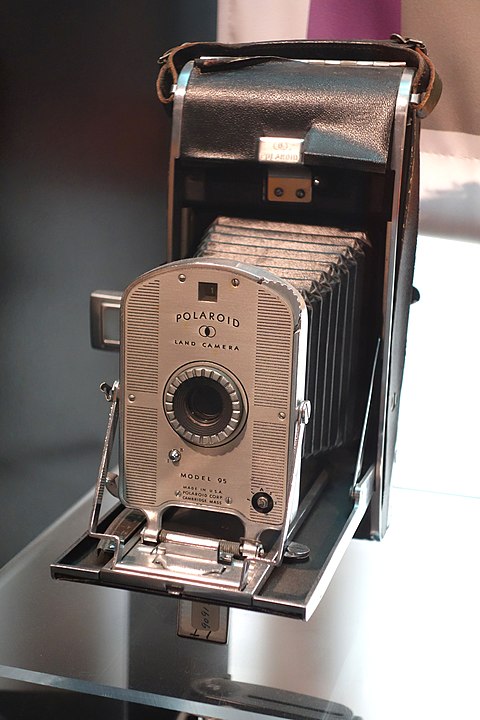Now that we’re in the digital age, it can be hard to remember that a great many of the things we enjoy because of digital circuitry were available in the past, in analog form. For instance, we take it for granted that we can snap a picture and see the results right away. There’s nothing particularly new in that; before digital cameras, what you needed was a Polaroid Land Camera, invented by Edwin Land. He was born May 7, 1909.
Land was born in Bridgeport, Connecticut, in the US, and as a boy became somewhat notorious for taking things apart. Things like the family’s brand-new gramophone, and the special clock they kept on their mantel. He got in trouble for it, as well as for blowing all the fuses in the house, but vowed that “nothing or nobody could stop me from carrying through the execution of an experiment.”
He enrolled in Harvard University to study optics, but left after just a year to pursue his research independently. He moved to New York City, and couldn’t afford his own laboratory, so he snuck into Columbia University at night to use their labs. He also frequented the New York Public Library to read all he could about optics, and about his specific interest at the time, the polarization of light.
His nighttime research succeeded and he invented the first inexpensive filters for polarizing light — he called it Polaroid film. After his invention he returned to Harvard, but couldn’t be bothered to do any homework — according to his biographer, “once Land could see the solution to a problem in his head, he lost all motivation to write it down or prove his vision to others.” He was married by then, and his wife tried to help by looking at the homework he was supposed to do, asking him for the answers, and writing them down so he’d have something to hand in. It didn’t help enough, though, and he again dropped out. In fact he never earned a college degree, but later on when he was a visiting professor at Harvard and MIT, everyone called him “Dr. Land” anyway (he actually did receive an honorary doctorate from Harvard).
When he was about 23 he partnered with one of his professors, George Wheelwright, to establish the Land-Wheelwright Laboratories. Wheelwright provided the funding (he came from a very wealthy family), and Land provided the expertise in optics and polarization. They began marketing polarizing filters for photographers and for sunglasses in 1932, and got Wall Street investors to provide additional funding to expand the company. In 1937 they renamed the company the Polaroid Corporation.
In the early 1940s Land took his family on a vacation to New Mexico. His family by then included 2 children, and the older one, Jenny (who was just three) asked her dad why she couldn’t see the photo he’d just taken of her. This was an aha moment for Land, who had figured out the basic idea for an instant camera within about an hour. He started work on it as soon as he got home.
It took three years, but Land demonstrated his instant camera and film in 1947. The Polaroid company was dubious about the whole idea, and only produced 60 units. Fifty-seven of them were put on sale in a Boston store. The Polaroid marketing department assumed that if the cameras started to sell, there’d be plenty of time to start manufacturing more. They were wrong; though; all fifty-seven were sold within hours.
At Polaroid, Land was famous for his long, uninterrupted sessions in the lab. Food would be brought in, but he had to be reminded to eat it. he had teams of assistants, but since they couldn’t keep up with his pace, they worked in shifts. These sessions were quite long; reportedly one lasted 18 days. He ended up with 535 patents, still the third highest total for an individual. He didn’t like being written about, though, and was wary of being the object of a cult of personality. After his death, he directed that his personal papers and notes be shredded. There were a lot of them; it took three years. The list of honors and awards he won is longer than this whole post, though. After he retired from Polaroid in 1982, the company dropped the “Land” from the name of the camera, and also pretty much lost its way. Nowadays the brand name exists, but the company itself is gone. When Land founded an institute for science in Boston, he refused to have it named after himself. The Rowland Institute is now part of Harvard University. Oddly, it doesn’t seem to be recorded where Land came up with the name “Rowland.” The Optical Society of America now awards an annual Edwin H. Land medal for the best work in the field. And there are still photographers using analog instant cameras using the processes Land invented.

The first Polaroid camera, “Model 95”
